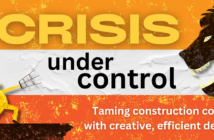by ASIF LAKHANI
Minneapolis tourism at a glance: 2018
- 34.5 million visitors
- $8 billion in spending
- $8 Million in lodging taxes
- One of the largest public transportation systems in the U.S.
- Nearly 36,000 hospitality industry jobs
- 40 hotels
- 9,200 combined rooms
As one of the Twin Cities, Minneapolis has both the charm of a Midwestern town and attractions that have global appeal. The Twin Cities region as a whole had 34.5 million visitors who generated an $8-billion economic impact via spending and another $8 million in lodging taxes for Minneapolis alone in 2018. (Of note: The city hosted the Super Bowl in February of that year.)
TAXES SUPPORT TOURISM
The state’s lodging tax is used to boost tourism efforts for the individual cities. The standard rate is 3 percent on hotel stays, and bigger cities such as Minneapolis charge an additional 3 percent on hotels with more than 50 rooms, according to the Pioneer Press. The majority of the funds (95 percent) raised by the tax must be put toward the promotion of tourism activities, the paper says. An October 2019 article detailed how the lodging tax concept is beginning to gain traction in the region’s suburbs. How that changes the future of tourism and hospitality in the Twin Cities remains to be seen.
The tourism and hospitality industry accounted for nearly 36,000 Minneapolis jobs in 2018, which was an increase of more 1,100 jobs (3 percent) than the year prior. The city’s 40 hotels with 9,200 combined rooms had a 70.8-percent occupancy rate for the year, according to the report. The industry is the fourth-largest driver of jobs in the city, Mayor Jacob Frey said in the release.
The hotel development roster for Minneapolis features a handful of various types (luxury, boutique, standard, etc.) with an estimated 1,700+ total hotel rooms to open in the coming years. A Hilton and a Marriott are scheduled to open their doors this year.
DRAWING IN VISITORS
The Twin Cities region isn’t lacking in attractions, specifically those of the natural kind. Minneapolis has a total of 197 parks, and nobody has to go further than six blocks to find one of them. Minnesota’s 22 lakes means it has more shoreline than California, Florida, and Hawaii – combined.
The region’s biggest attraction though – both literally and figuratively – may be the Mall of America, which is located in Bloomington. Situated on 78 acres, the mall attracts 40 million visitors annually and generates $2 billion in economic activity for the state of Minnesota. Four out of 10 visitors to the mall are tourists, and there are two attached hotels: a J.W. Marriott with 342 rooms and a Radisson Blu with 500 rooms. Being located just 1.5 miles from the city’s airport makes hosting 400+ events a year easy and efficient as well. More than 11,000 employees work year round at the mall, which features 520 stores, the world’s largest indoor theme park, a simulated flight tour of the entire U.S., and 7 acres of skylights to allow for 70 percent of natural light to feed the park inside.
TRANSPORTATION CELEBRATION
Minneapolis’s Metro Transit operation is one of the largest public transportation systems in the country and features two light-rail lines, a commuter rail, and bus service. The system provided 80.7 million total rides in 2018. It was Metro Transit’s eighth consecutive year with more than 80 million rides and continued the trend of the system’s highest level of ridership in three decades, according to the Metro Transit blog.
All in all, Minneapolis provides a great blend of nature, attractions, sporting, and cultural events that appeal to a diverse profile of travelers. The well-thought-out urban planning and development of Minneapolis make professional and leisure travel rewarding and efficient, while the city’s cultural phenomenon (the home of Prince being chief among them) solidify its identity as a true gem of the Midwest and beyond. For investors, Minneapolis is a city committed to tourism, hospitality, and transportation for all residents and visitors




